This article includes instructions for installing and configuring Application Manager in a closed MECM environment, as well as steps for deploying new versions of AM-supported applications.
Requirements for closed environment installation
- Server with access to the Internet (Downloader server)
- Server inside the closed environment (AM server)
- Platform requirements (Excluding Network Requirements)
- Configuration Manager requirements
- This can be a MECM server, or a server with Configuration Manager console
- Solution to copy files from the Downloader server to the AM server
To install and configure Application Manager in a closed MECM environment:
1. Download the Application Manager installer to both servers.
2. Find the ID and Key for downloader installation.
3. For the Downloader server, install Application Manager in downloader mode.
NOTE: Wait until all applications have been downloaded before proceeding to the next step, meaning Download status = Completed.
4. For the AM Server:
a. Run the Application Manager installer and follow the prompts.
Do not open the Application Manager Integration Client from the Start menu at this point!
b. Create a folder for application installation media.
c. Disable Recast Software Application Manager - download scheduled task in Windows task scheduler.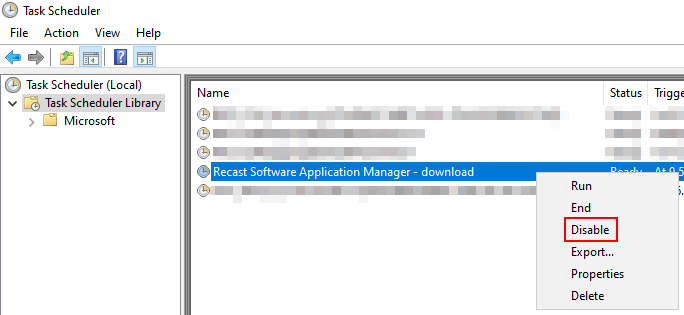
d. Open Notepad as an administrator and edit C:\ProgramData\Recast Software\Application Manager\Application Manager.xml to add <Integration>SCCM</Integration> in the <Settings> section. Save your changes.
e. Copy the following files and folders from the Downloader server to AM server's matching locations. Replace existing files, if prompted.
- C:\ProgramData\Recast Software\Application Manager\PackageDownloader\PackageDownloader.db
- C:\ProgramData\Recast Software\Application Manager\PackageDownloader\PackageDownloader.xml
- C:\ProgramData\Recast Software\Application Manager\PackageDownloader\Software.json
- C:\ProgramData\Recast Software\Application Manager\SCCM\Error
- C:\ProgramData\Recast Software\Application Manager\SCCM\Queue
f. Copy all files and folder from the Downloader server's installation media folder to the newly created installation media folder on the AM server.

You should now have the same files on both servers.
Downloader server
AM Server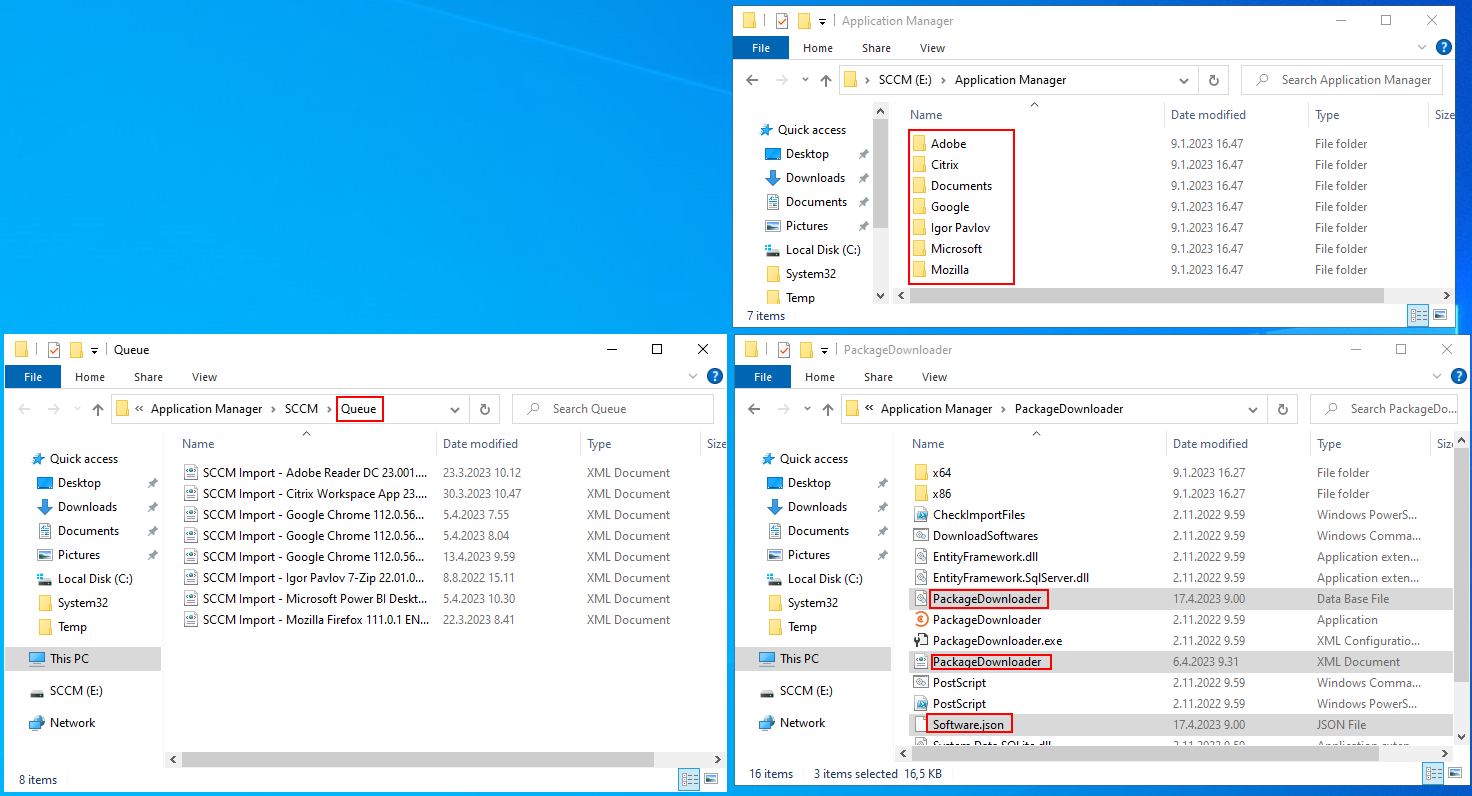
5. For the AM Server:
a. Open Application Manager Integration Client from the Windows start menu.
b. Click OK. 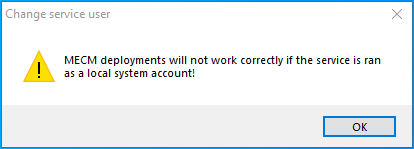
c. Enter your Application Manager service account credentials and click Ok.
d. Open Task Manager and end the Recast Application Manager.exe task.
e. Open Notepad as an administrator and edit C:\ProgramData\Recast Software\Agent\Modules\4.6\CMM\SCCM-Import.xml by finding the CollectSCCMInformation tag and changing disabled to "false". Save your changes.
Wait until the C:\ProgramData\Recast Software\Application Manager\SCCM\SCCM Information.xml file is created. This usually takes one minute. If the file is still missing after few minutes, see this Application Manager troubleshooting article.
f. Open Application Manager Integration Client from the Start menu.
NOTE: You will see a 'Failed to get packages from web service' error message when you open Application Manager or navigate to the Overview tab, as Application Manager cannot connect to backend services.
g. Click OK to dismiss the error message.
h. On the Settings tab, modify the packages root folder value if it's different than on the Downloader server and click Apply.

i. Go to the MECM Integration > Default general settings tab. Change Filesystem root to the UNC path of the application installation media folder (Packages root) and click Apply to save changes. This will be the root folder of content location setting in MECM.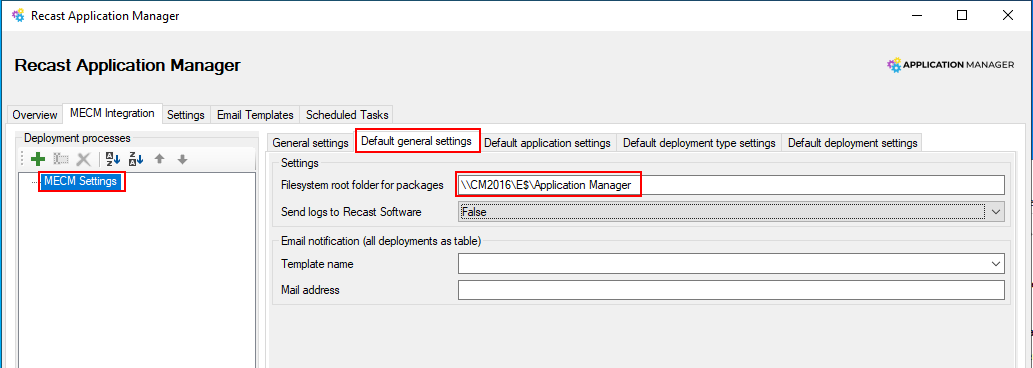
You can configure other default deployment process settings on the Default application settings, Default deployment type settings and Default deployment settings tabs. Default settings will work as a template for new deployment processes. Learn more about deployment processes.
j. Create one or more deployment processes by selecting application(s) and configuring deployment settings. Select Apply to save changes.
Example deployment process for Google Chrome
k. Enable Application Manager for MECM Integration.
l. Restart Application Manager by selecting Close, and opening it from the Windows start menu.
Make sure Download Statuses are displaying as Completed, and you can see MECM Status and MECM Deployment process columns. If the columns are missing, restart Application Manager. If Download status is not ready, make sure the packages root is correct on the Settings tab.

Application(s) included in deployment processes will be automatically imported to MECM.
If the MECM Status is in Error in any application, select the application row and click Retry. Select Yes in the first pop-up window, and No when asked to redownload the media. If you accidentally delete installation media on the AM server, you'll need to copy the installer files from the Downloader server.
You can find application(s) from MECM once MECM status changes from Import queued to Import Successful. See Known Issues below, if the application import takes over 15 minutes.
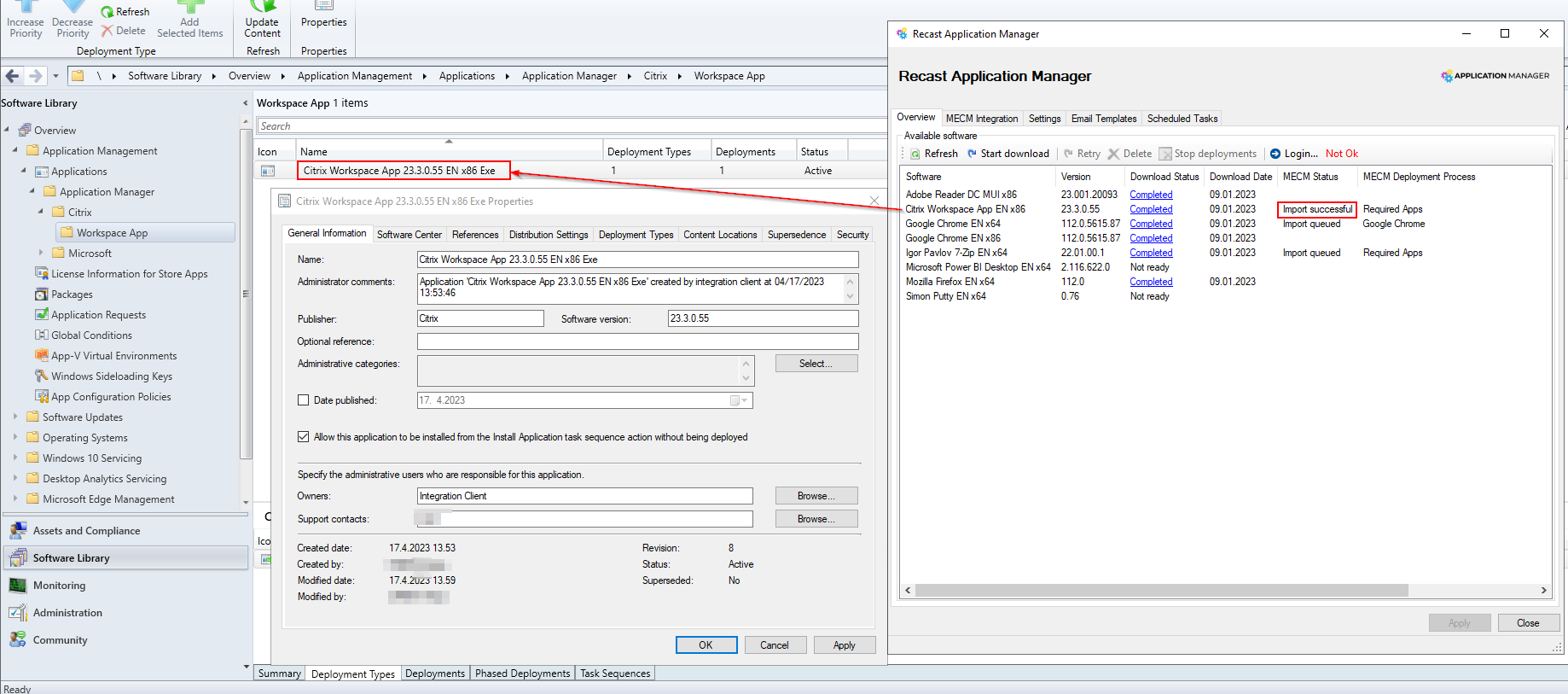
Deploy New Application Versions in a Closed Environment
Whenever the Downloader server receives a new application version or you want to deploy a new version to your closed environment, you'll need to copy the following files to the closed environment's AM server in order to deploy the latest versions:
- C:\ProgramData\Recast Software\Application Manager\PackageDownloader\PackageDownloader.db
- C:\ProgramData\Recast Software\Application Manager\PackageDownloader\PackageDownloader.xml
- C:\ProgramData\Recast Software\Application Manager\PackageDownloader\Software.json
- Application version-specific file and folders:
- C:\ProgramData\Recast Software\Application Manager\SCCM\Queue\SCCM Import - [Publisher Name Version Language Architecture].xml
- Packages root folder\Documents\[Publisher Name Version Language Architecture]
- Packages root folder\[Publisher]\[Name]\[Version]
The Packages root folder might be different on the Downloader and AM servers, but the structure should stay the same.
TIP: If you are copying multiple applications at the same time, it might be faster to copy all contents from Packages root folder and C:\ProgramData\Recast Software\Application Manager\SCCM\Queue folders, instead of application version-specific files and folders.
Example: If there was a new version of 7-Zip, you would copy the following files and folders to the AM server.

After you've copied all the required files, Application Manager will start the import process within 10 minutes and deploy the application to collections specified in deployment processes.
Known Issues
- The Overview tab might be empty after retrying application import or when import status changes. The application list should come back after restarting Application Manager.
- Offline installation skips MECM validation, so you need to make sure you have a distribution point group in your Configuration Manager. Follow solution 5 from these instructions if application imports are stuck in queue status.
- First-time application import can be slow if you haven't add all your applications to deployment processes.
Move application specific xml-files from C:\ProgramData\Recast Software\Application Manager\SCCM\Queue to C:\ProgramData\Recast Software\Application Manager\SCCM\Error of the applications that are not part of any deployment process.




